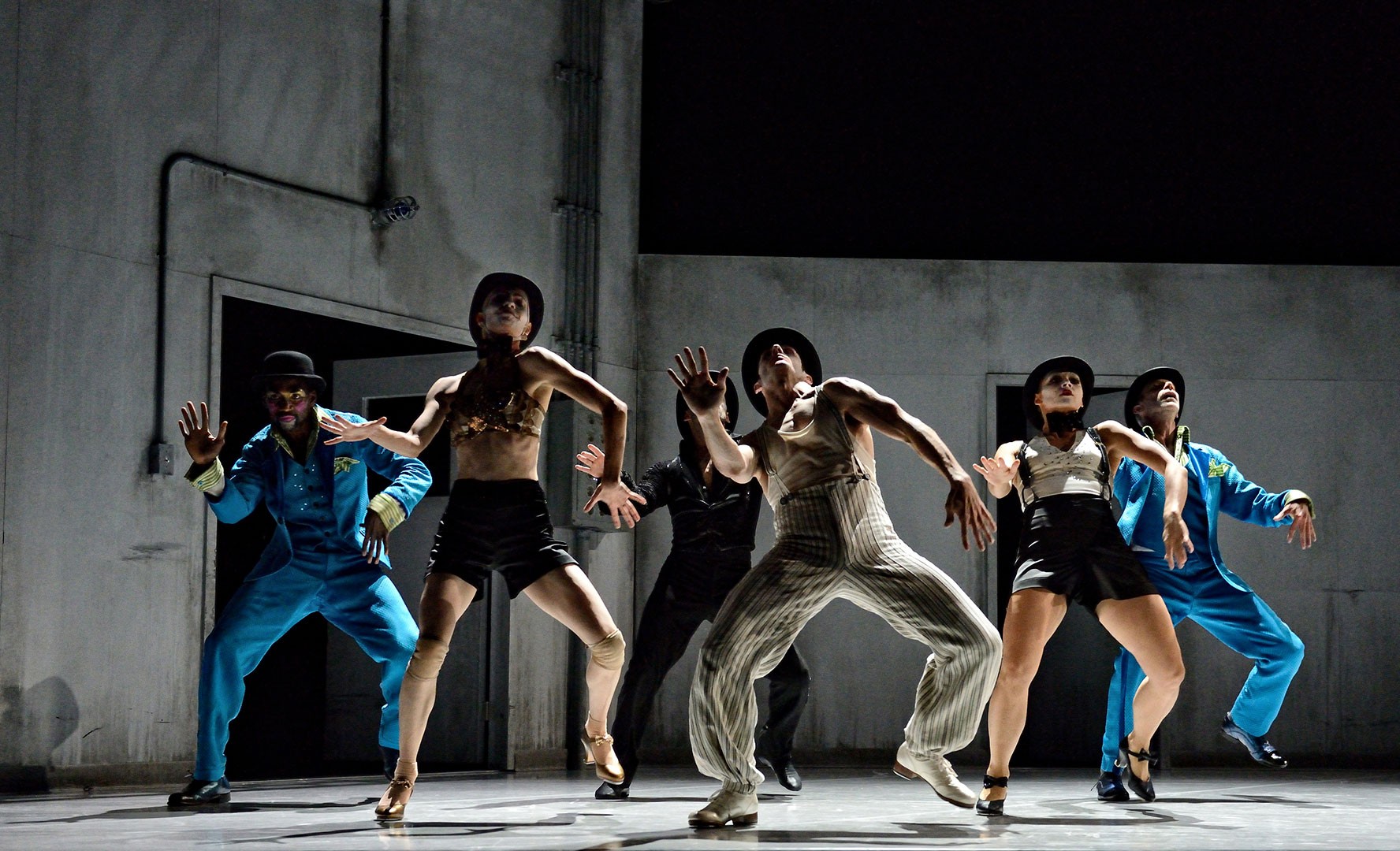Sitting in the audience of the Power Center, I soon realized how distant this show was from any previous theater experiences I’d had before. The show began looking into the set of a vaguely warehouse-esque room with a column in the middle, and the first thing to happen was the movement of electrical cords, spreading apart to opposite ends of the stage. Almost ghost-like, they seemed to move on their own accord and there was no indication where the movement was coming from. This first minute was when I began to question what I had entered into for the next two hours. As I searched for words and footholds into this piece, something to describe and relate to it, the closest mainstream theater description I could find became the musical Chicago meets psychological-thriller-horror-movie. Think jazz numbers and spangled costumes mixed with the anticipation of brutal plot twists and fear. The lack of footholds to grasp onto in the piece, though, seems characteristic of new age-y modern expressionism. It is the interiority of the creator depicted onto the stage, meant to make the audience think and contemplate, not merely for surface-level enjoyment. A potential, and possibly more accessible, dance comparison that kept coming to mind throughout the performance was the “Slip” video that circulated the internet about while ago.
Both the slippery, interconnected choreography and the eery industrial set (with flickering fluorescents and all) is quite similar in style to that of Betroffenheit. The first act of the production mixed theater and dance together, with very little dialogue. In a premonitory twist, a strobe-light warning was issued before the show began; as it progressed, the production itself became a strobe effect. A bombardment of the senses, I continually felt that just as I had regained my balance and was beginning to understand, I was quickly thrown off, left reeling and scrambling back into the show.

The show was an exploration in the experience of trauma, and though it held the aforementioned eery quality, it was not exclusively a dark production. A bright and exciting cha cha-esque number was thrown in, along with a series of tap and vaudevillian pieces.
The second act was more of a dance production than theater, focusing on the choreography of Crystal Pite. Her work in Betroffenheit was mesmerizing; almost pedestrian with liquid-like partnering work that featured the breadth and skill of the performers more so than the first act had. While I struggled to grip and understand the first act’s interpretation and representation of emotional exploration, I loved the emotion and expression through the choreography.

As I listened to the reactions of those sitting around me, many people were in love with Kidd Pivot and the Electric Company’s work. Many also seemed as though this style of performance was not outside their wheelhouse. Betroffenheit, from my interpretation, seemed like a show best suited for those saturated within the dance and experimental performance community – those who are constantly looking at and working with this genre of material. While I, as an outsider, could appreciate and enjoy pieces of it, I feel as though the powerful and soul-stirring impact was somewhat lost on my uninstructed-self.


